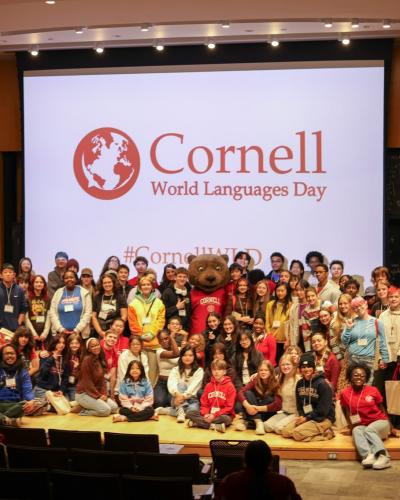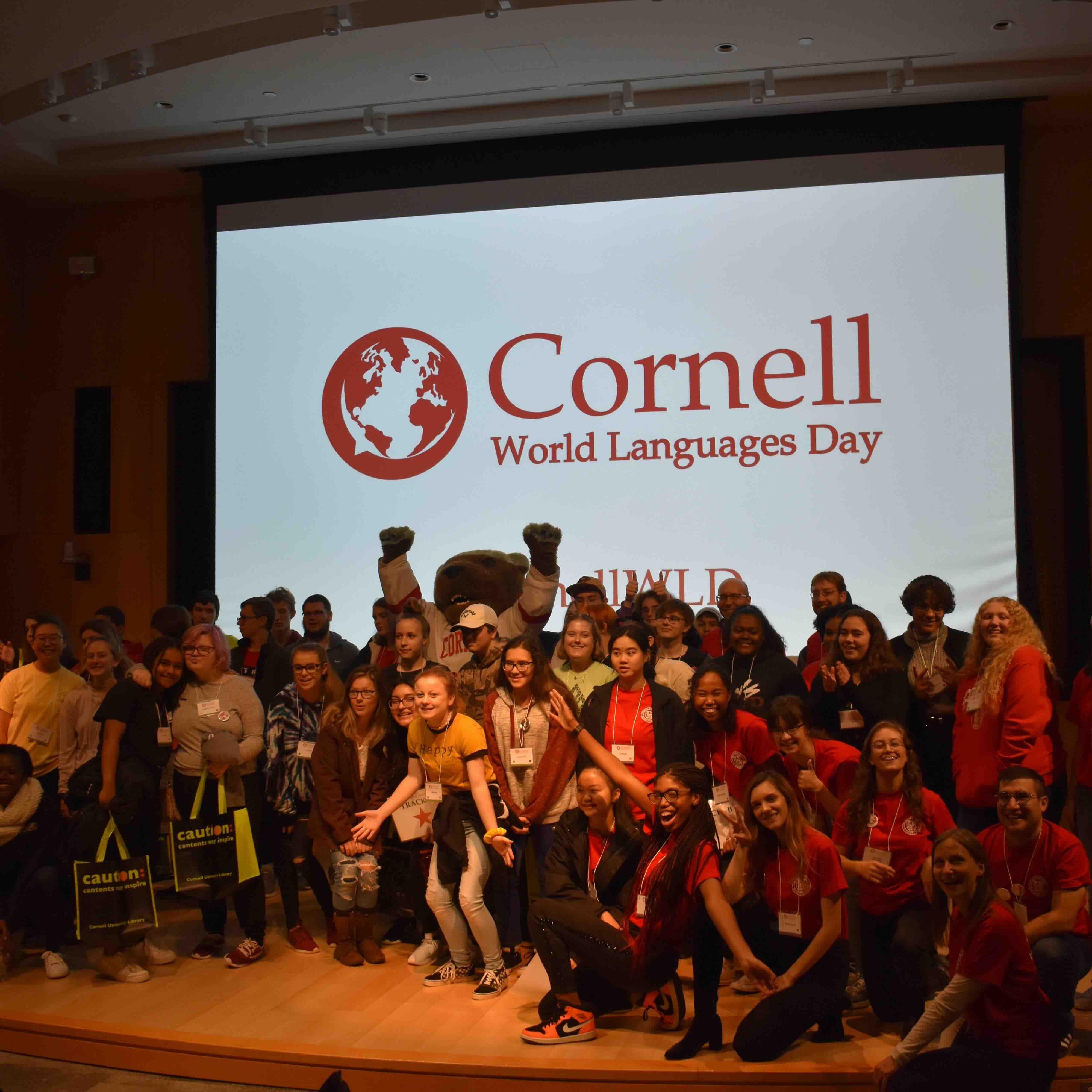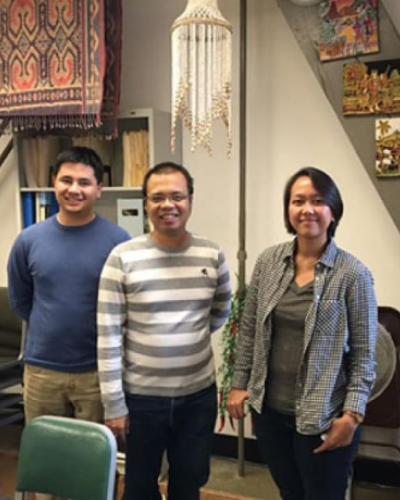Having been born and raised in Jakarta, Indonesia, I am constantly amazed by the high level of linguistic diversity in this city. The Indonesian archipelagos are home to six hundred to seven hundred living local languages. The high population density in this national capital creates extensive interethnic and linguistic interaction among the inhabitants of this vibrant and boisterous metropolitan area.
I spent my childhood in the middle of Kampung Betawi, on the outskirts of Jakarta. My childhood friends came from various ethnicities, but most of them were Betawi children who spoke Betawi Malay, an indigenous variety of Malay. As a child I was immersed in Javanese family traditions, since both my parents are Javanese who moved from Yogyakarta (central Java) to Jakarta. Although I was exposed to Javanese language and culture at home, I did not become a fluent speaker of Javanese. It appears that the linguistic input from other surrounding languages, namely Betawi Malay and Standard Indonesian, jelled more in my mind.
This complex linguistic heritage inspired me to study more about Indonesian linguistics. For this reason, five years ago I applied to the PhD program in linguistics at Cornell. Among Southeast Asian linguists Cornell is famously known as an excellent place to study Southeast Asian and Austronesian languages, and it is equally known for our very own Southeast Asia Program.
My dissertation project investigates cross-generational language transmission in my native language, Jakarta Indonesian, which is a complex blend of Betawi Malay and Standard Indonesian. Jakarta Indonesian originally developed from Betawi Malay, a variety of Malay that emerged in Jakarta around the eighteenth and nineteenth centuries and was heavily influenced by Portuguese, Dutch, Arabic, Chinese, and the surrounding local languages such as Sundanese, Balinese, and Javanese. Standard Indonesian is the formal and national language of Indonesia and is cultivated by the National Language Board formed by the Indonesian government.
Indonesian was declared the future language of Indonesia in the 1928 Youth Pledge. In 1945, after World War II, the country gained independence from the Dutch and established Standard Indonesian as the national language. It was then declared as the national language with the founding of Indonesia in 1945. A vernacular language emerged after World War II, with a huge influx of economic immigrants to the capital city. These immigrants came from various parts of Indonesia, speaking their own local languages. The second generation of these immigrant families has been forming a new linguistic variety, shifting away from their parents’ local vernaculars. This new variety is called Jakarta Indonesian by some scholars.
As a relatively new variety, Jakarta Indonesian has reached a high level of language vitality within only a few decades. Under Professor Abby Cohn’s supervision, my research attempts to shed light on the development of Jakarta Indonesian through phonological patterns transmitted over three generations of speakers. I investigate these patterns, using large-scale naturalistic speech corpora collected from three generations of Jakarta Indonesian speakers. They consist of adult speech from the 1970s, adult speech from the 2000s, and pre-adolescent speech from the 2000s.
The data from the 1970s is part of Dr. Stephen Wallace’s doctoral thesis. Wallace was a graduate student in the Department of Linguistics at Cornell and worked closely with Professor John Wolff. Wallace generously sent me the corpus that he collected from various subdistricts in Jakarta in the early 1970s. The digitization of Wallace’s corpus, in collaboration with Olin Library, is now available and open to scholars around the world through eCommons, Cornell’s digital repository.[1] I hope that this searchable corpus may be beneficial to other linguists who want to study it in the future. The data from the 2000s was collected by the Max Planck Institute for Evolutionary Anthropology, Jakarta Field Station. I was involved in this documentation and database creation project from 2000–07.
My study finds that some Betawi Malay phonological forms were still produced in a robust distribution by Jakarta Indonesian speakers in the 1970s but sharply decreased in the 2000s data, regardless of gender and educational background. This abrupt decline in the use of certain patterns between speakers in the 1970s and 2000s suggests a change in progress that happens where unfaithful or broken language transmission occurs cross-generationally. This is due to the successful story of Standard Indonesian cultivation by the Indonesian government. The crucial time of the modernization of Indonesian was between 1966 and 1998, when Indonesia was under the Soeharto regime.[2] The government viewed standardization of Indonesian as one of its major initiatives to support the stability of the nation and the economic development program. This has caused speakers of the local languages to use more Indonesian, leaving behind their parents’ languages. In my investigation, although we can still see a trace of Betawi Malay as the more conservative variety, the tendency to produce more Standard Indonesian forms is unavoidable among Jakarta Indonesian speakers.
While it might seem ironic for me to be studying my own native language in Ithaca—across the globe from my hometown in Jakarta—it has many advantages. Not only have I had the opportunity to combine the resources of an outstanding Department of Linguistics at Cornell and SEAP, I have also had the opportunity to learn about Indonesia, not on its own but as part of Southeast Asia.
I gained this new intellectual perspective by joining the SEAP community. In addition to learning from the SEAP Gatty Lecture Series, I gained enormous insight into Southeast Asia as a region when I assisted in teaching the course Introduction to Southeast Asia, taught by Professor Arnika Fuhrmann. As a foundational course, the class showed me the importance of transdisciplinary, transnational, and transregional approaches to studying this region, well known for its expansive geography and great cultural, social, and linguistic diversity. As a linguist, I was excited when Professor Tom Pepinsky contacted me about the opportunity to develop and teach an Indonesian in Foreign Language Across the Curriculum (FLAC) class. FLAC courses are open to students whose language skills are at the intermediate level or above and provide an additional opportunity for them to practice. With Lisa Sansoucy, FLAC coordinator, and the support of Professors Eric Tagliacozzo and Tamara Loos, we developed the first Indonesian FLAC course in spring 2016. Indonesian FLAC was embedded in and shared between two parent courses: Southeast Asian Politics, taught by Professor Pepinsky, and Southeast Asian History from the 18th Century, cotaught by Professors Tagliacozzo and Loos.
The second Indonesian FLAC course was offered in spring 2017. It was embedded in the parent course Monsoon Kingdoms: Pre-Modern Southeast Asian History, taught by Professor Tagliacozzo. I found that this integrated model of a cross-disciplinary approach has proved to be an effective and efficient method for students to learn Indonesian as a foreign language and to acquire the content knowledge from the parent courses at the same time. I also think that this initiative is an excellent way to promote a less commonly taught language such as Indonesian in an academic context. The mixture of native speakers, heritage, and “bottom-up” learners is unique to FLAC. As a native speaker of Indonesian, I was very glad that I could facilitate the Indonesian FLAC courses. This is a rare opportunity, unique to Cornell. FLAC courses would not be possible without support from SEAP.
I hope that my research on Indonesian languages can contribute to the field of Southeast Asian/Austronesian linguistics. I am grateful for my involvement in the SEAP community, which has significantly shaped and enriched my research and scholarly journey as a doctoral student and as a native Indonesian.
NOTES
[1] Cornell eCommons, https://ecommons.cornell.edu/handle/1813/45568/recent-submissions.
[2] James Sneddon, (2003). The Indonesian Language: Its History and Role in Modern Society (Sydney: University of New South Wales Press, 2003).
This article appeared in the Southeast Asia Fall Bulletin 2017.







